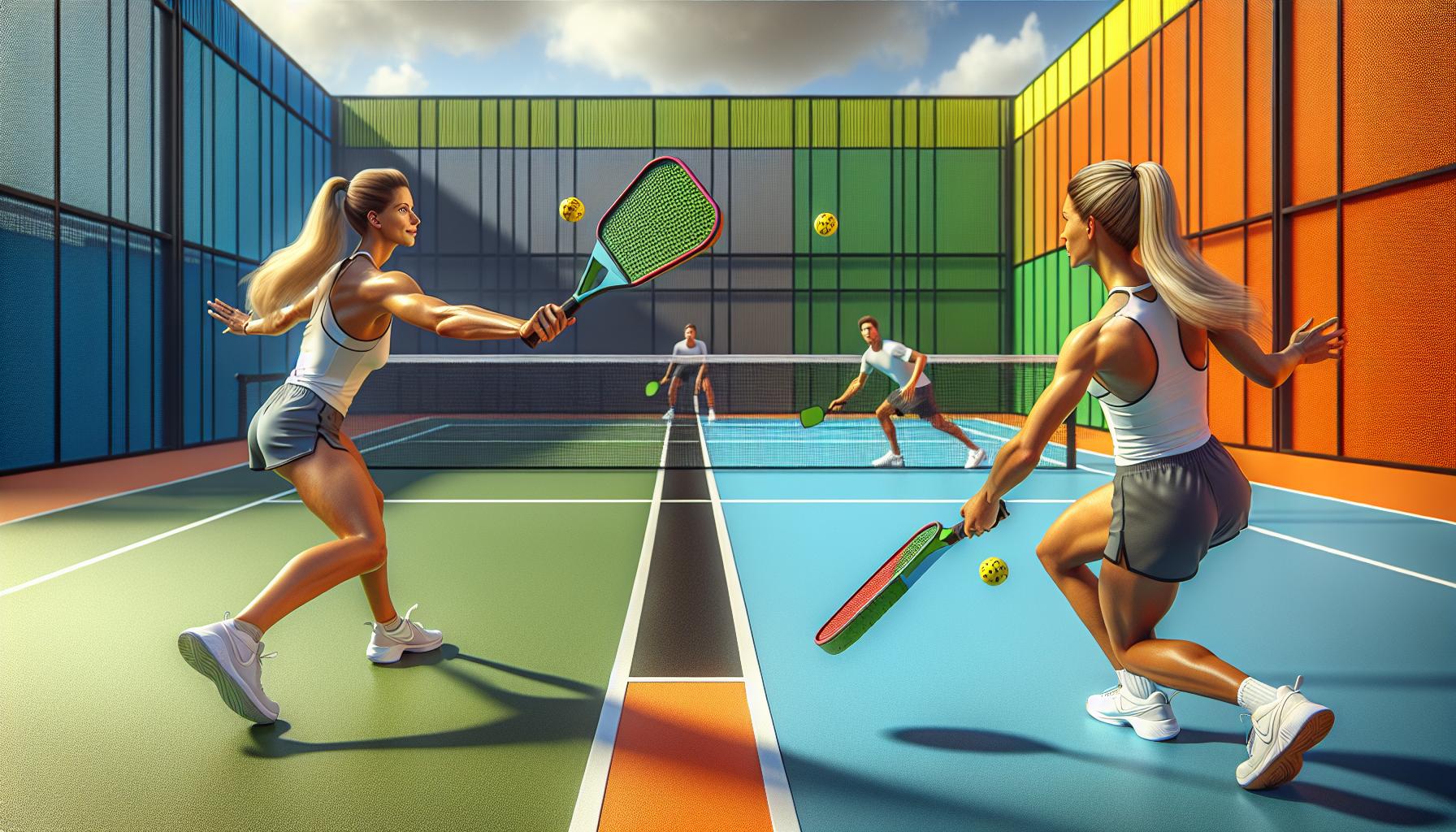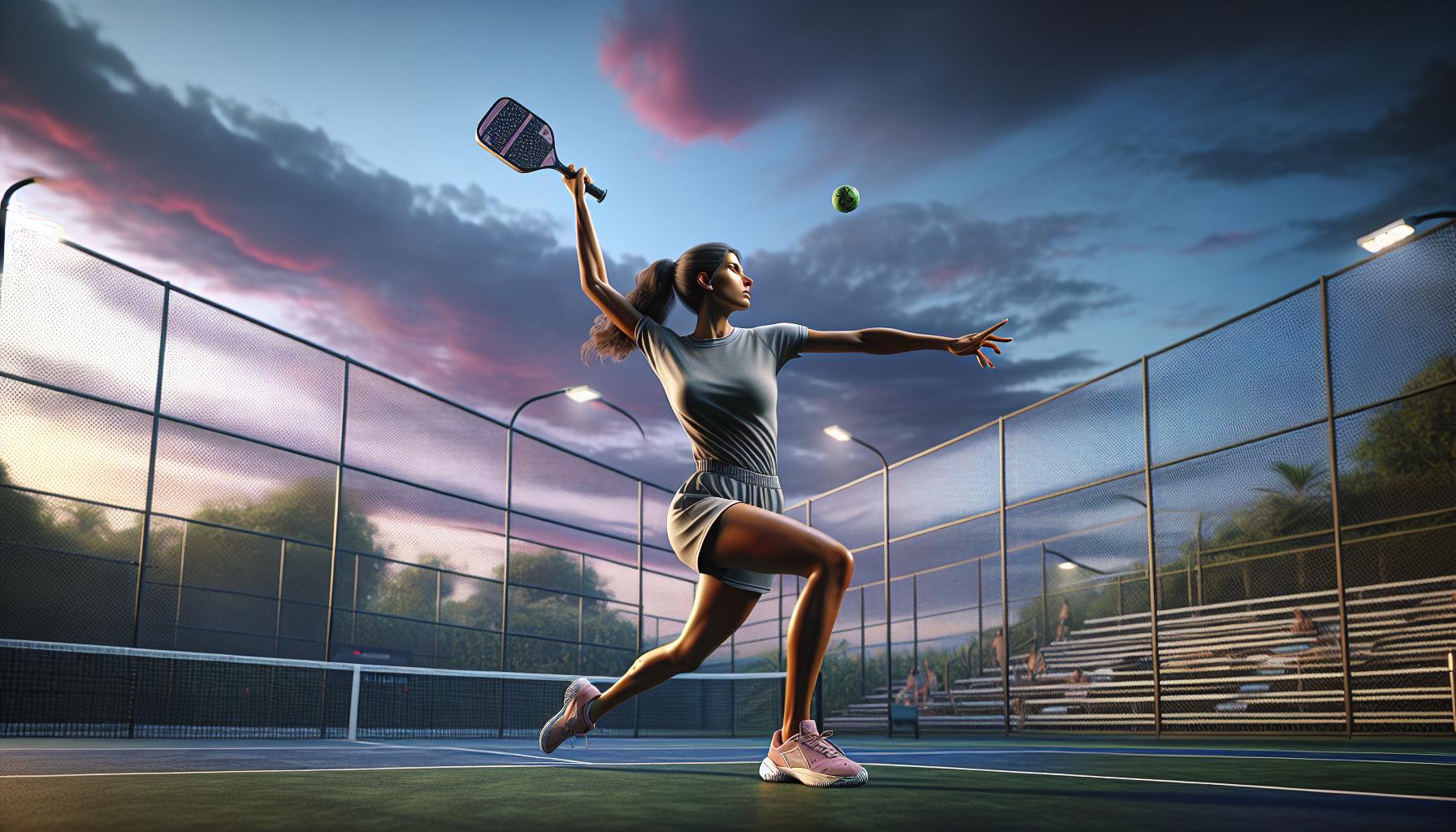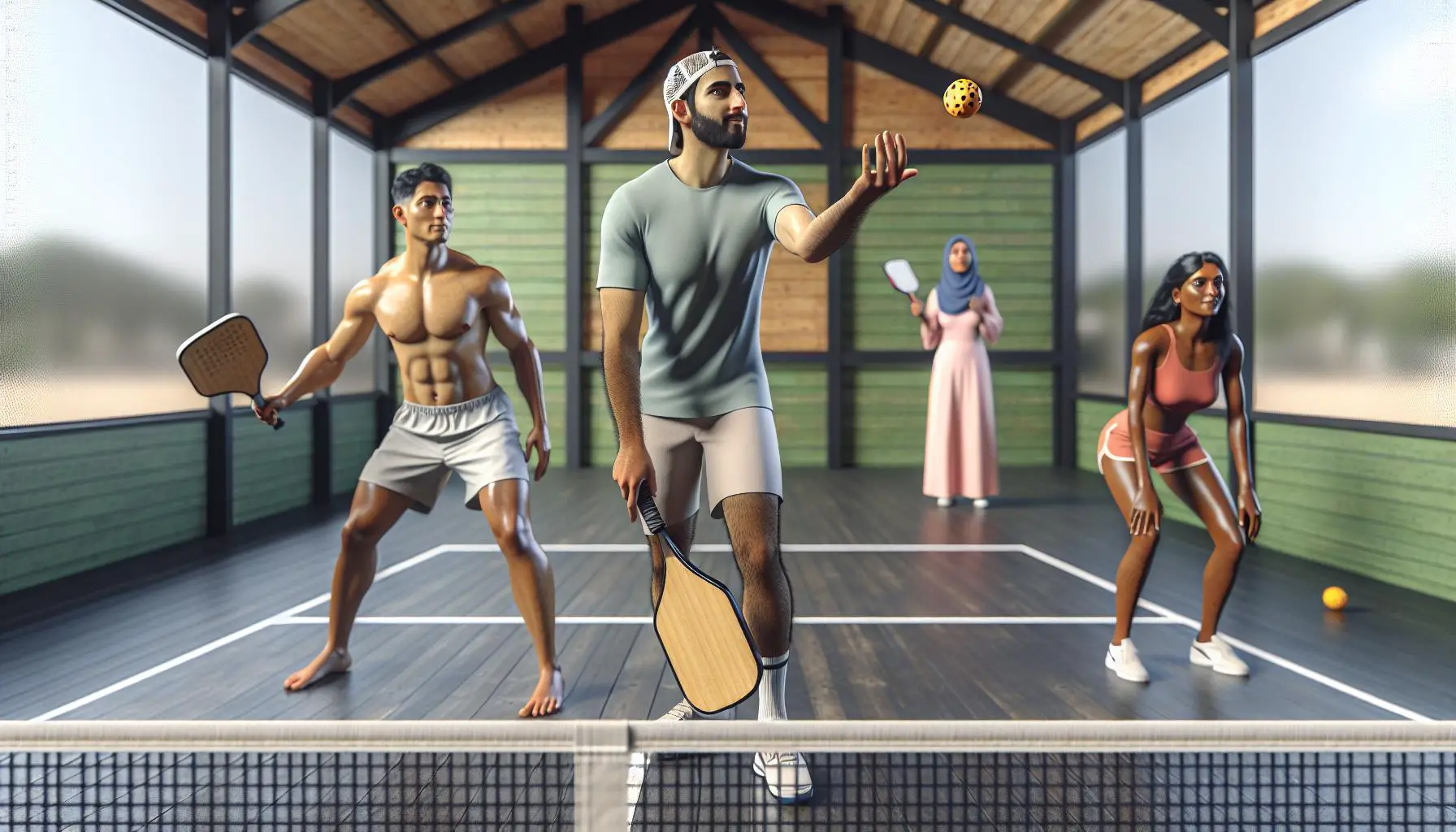Pickleball’s skyrocketing popularity isn’t just because it’s fun and accessible; it’s also due to its unique blend of rules that keep every game interesting. Whether you’re a seasoned player or just picking up a paddle, understanding the service rules for singles and doubles is crucial to not just playing by the book but also strategizing your way to victory.
At first glance, pickleball service rules might seem straightforward, but there’s more than meets the eye, especially when you dive into the nuances between singles and doubles play. From where you stand to how you serve, each detail can significantly impact the game’s flow. Let’s get into the nitty-gritty of these rules to ensure you’re serving up success on the court.
Overview of Pickleball Service Rules
Pickleball, a sport that has woven itself into the hearts of many, leans heavily on its service rules to structure play. Whether in singles or doubles, understanding these rules not only ensures a fair game but also lays the groundwork for strategic plays. At its core, the service in pickleball acts as the game’s pulse, setting the rhythm and pace for the players.
The Basic Service Rules
At the beginning of a pickleball match, the server must stand behind the baseline, keeping both feet behind the line until after they’ve hit the ball. The serve is executed underhand and must be hit in an upward arc. The paddle must contact the ball below the waist level. This underhand serve requirement ensures that power plays are balanced with skillful precision, keeping the game accessible and fun for players of all levels.
Another fundamental rule is the double-bounce rule. This rule mandates that the ball must bounce once on each side before players can volley it (hit it without allowing it to bounce) from the air. The service sequence goes to the opposing team once a fault is committed by the serving team, which can happen for various reasons, from serving out of bounds to not adhering to the correct serving order in doubles.
In doubles, both players on a team get the opportunity to serve and score points until they commit a fault, after which the service goes to the opposite team. However, at the start of each new game, only one player from the starting side is permitted an initial serve.
Service Positioning and Strategy
Service positioning in singles and doubles play reveals the game’s strategic depth. In singles play, effective serve placement can force the opponent to move in a way that opens the court for the next shot. Players often aim for the corners to stretch their opponent’s reach or serve to the opponent’s backhand to exploit weaker returns.
In doubles, positioning and strategy take on an additional dimension. Communication and coordination become paramount as players decide who will take which shots and how to best move as a unit to cover the court. Serving strategies often involve targeting the weaker of the two opponents or serving in a way that sets up the serving team for a strong volley or smashing opportunity.
| Aspect | Singles Play | Doubles Play |
|---|---|---|
| Court Coverage | Extensive | Shared responsibilities |
Service Rules for Singles Play

In singles play, the dynamism and strategy behind each serve are crucial. Unlike doubles, where players share the court space and responsibilities, singles gameplay puts the spotlight solely on one player’s skill and tactical mindset.
The fundamental rule in singles is the service must be made diagonally across the court, aiming for the opposite service box. This requirement ensures that each serve introduces a strategic play instead of just starting the rally. What’s fascinating is how players use this serve to position themselves advantageously for the next move.
One unique aspect of singles play is that the serve alternates between the left and right service courts, depending on the score. If the server’s score is even, they serve from the right court; if it’s odd, they serve from the left. This rule might seem simple, but it adds a layer of strategic depth to the game. Players must be adept at serving and playing from both sides of the court, adapting their serve and play style based on their position and the score.
| Score | Service Position |
|---|---|
| Even | Right Court |
| Odd | Left Court |
Players must also remember the two-bounce rule; the ball must bounce once on each side of the net before volleys are allowed. This rule encourages movement and a wider variety of shots, making the serve all the more critical in setting the tone for each rally.
In terms of specific serving strategies, players often experiment with different serve types to gain an edge:
- Soft serves are used to lure the opponent closer to the net, potentially opening the backcourt for powerful returns.
- Power serves aim to push the opponent back and possibly earn an ace if the serve is particularly fast and well-placed.
Mastering these serves and strategically deciding which one to use based on the opponent’s weaknesses and the game situation can make a significant difference in singles play.
Moreover, players use the serve to control the pace of the game. A well-timed power serve or a strategically placed soft serve can disrupt the opponent’s rhythm. In singles, where each player covers the entire court alone, keeping the opponent guessing and off-balance can be particularly effective.
Service Rules for Doubles Play

Transitioning from singles to doubles play in pickleball introduces a layer of complexity to the service rules that can dramatically affect the dynamics of the game. In doubles, both team members get the opportunity to serve (except at the beginning of the game, where only one player starts with the serve), and service alternates between teams when a fault occurs. This rotation adds a strategic depth to serving that’s unique to doubles matches.
Firstly, the starting position in doubles is determined by the score. If the serving team’s score is even, the player on the right serves first and if odd, the player on the left serves. This rule ensures a constant rotation and equal opportunities for both players to serve.
The Two-Bounce Rule applies in doubles just as it does in singles. This means after the serve, the ball must bounce once on the opposing side, and upon return, it must bounce once before the serving team can return the ball. This rule encourages volleying and strategic placement of returns.
An essential part of doubles play is the sequence of service. After the initial serve of the game, the serving rights and positions continue to alternate between the team members. The flow of service follows a pattern:
- Server A serves to the diagonal court.
- A fault leads to service shifting to Server B.
- Upon another fault, the service shifts to the opposing team’s Server A.
This rotation continues, promoting a fair distribution of serving opportunities and challenges in positioning and strategy.
Here are some pivotal stats highlighting the significance of a good serve in doubles play:
| Aspect | Importance |
|---|---|
| Serve Depth | Forces opponents to the back of the court, allowing server to set position. |
| Serve Accuracy | Targets weak spots in opponents’ formations. |
| Variation in Serves | Keeps opponents guessing and unable to settle into a rhythm. |
Aside from the basic rules, communication and synergy between team members can’t be overstated. Teams that effectively communicate and adapt their serving strategy to exploit their opponents’ weaknesses tend to dominate in doubles play. Whether it’s alternating between soft serves to disrupt the opponents’ positioning or firing powerful serves to push them back, the variety in serving can be a significant advantage.
Key Differences Between Singles and Doubles Service Rules

Transitioning from singles to doubles in pickleball brings a host of strategic and rule-based changes that players must adapt to. While the essence of service in pickleball remains consistent across formats, subtleties in the rules have significant implications on gameplay and strategy.
In singles play, players are solely responsible for serving and receiving, simplifying the service rotation. The server continues serving until a fault is committed, at which point the service switches to the opponent. This direct back-and-forth can lead to a rhythm that some players excel in. Furthermore, in singles, the server can serve from either the left or right side of the court depending on the score.
Doubles play, on the other hand, introduces a more complex rotation system. Both members of a team have the opportunity to serve before the ball is turned over to their opponents. This pattern not only adds a layer of strategy but also demands that players be attuned to their position and score. The sequence of service in doubles is governed by the serving team’s score: if it’s even, the player on the right side serves; if it’s odd, the service is from the left.
| Aspect | Singles | Doubles |
|---|---|---|
| Server Rotation | Single server until fault | Both team members serve before turnover |
| Service Side Based On | Server’s score (even: right, odd: left) | Team score (even: right, odd: left) |
| Teamwork | Not applicable | High: Requires coordination for serve and position |
One of the most nuanced elements in doubles is the concept of the initial server designation, which indicates which of the two players will begin serving for their team at the start of the game. This choice can affect the early momentum and strategic positioning of the team.
Effective communication in doubles cannot be overstressed. Whereas singles players rely on their judgment and instinct without the need for verbal communication, doubles partners must constantly communicate to ensure they are covering the court effectively and making the most of their two serves. They also need to decide and adjust their serving strategies in real time, considering both their strengths and their opponents’ weaknesses.
Tips for Mastering Pickleball Service

Mastering the service in pickleball is crucial, whether you’re playing singles or doubles. A well-executed serve can set the tone for the entire point, providing a strategic advantage right from the start. Here are some essential tips to help improve your serve and elevate your game to the next level.
Practice Different Serving Styles
Experimenting with various serving techniques is key. From power serves to soft, strategic serves, diversifying your serving style will make you unpredictable and challenging for opponents. In singles, a deep serve pushes the opponent back, while in doubles, a softer serve might allow your team to take a strategic position at the net. The ability to switch between different serve types based on the game situation can be a valuable asset.
- Power serve
- Soft serve
- Spin serve
- Placement serve
Focus on Accuracy and Consistency
Accuracy and consistency in your serve can pressure your opponents and force errors or weak returns. Practice targeting different areas of the court and aim for consistency in your serve placement. This repetition will build muscle memory and confidence in your ability to place the ball exactly where you want it, irrespective of the game format.
Serve Deep
A deep serve in pickleball can be very effective, pushing your opponent back and limiting their options for a return shot. In singles, this can set you up for an aggressive follow-up, whereas in doubles, it can disrupt the opponents’ positioning and strategy. Aiming for the back few inches of the service box on a regular basis can make a significant difference in your game.
Utilize the Double Bounce Rule
The double bounce rule requires the ball to bounce once on each side before volleys are allowed. Serving in a way that maximizes the difficulty of the return can help ensure that your team gains the advantage by dictating the pace of the rally post-service. Whether it’s a deeper serve to push the opponents back or a short, slicing serve to disrupt their rhythm, understanding and leveraging this rule can be crucial.
Improve Your Serve Under Pressure
Being able to serve effectively under pressure is a skill that separates good players from great players. Practice serving in high-pressure situations, such as game points or during tight matches. Simulating these situations in practice will help improve your focus and performance during crucial moments in an actual game.
Conclusion
Mastering the art of pickleball service is a game-changer in both singles and doubles play. By embracing various serving techniques and focusing on key aspects like accuracy, consistency, and strategic use of the double bounce rule, players can significantly improve their game. It’s all about finding the right balance and adapting to the dynamics of each match. Whether it’s powering through with a strong serve or catching the opponent off guard with a soft, spin serve, the right serving strategy can set the tone for the entire game. So, keep experimenting and refining those serves because, with practice and patience, they’ll become your secret weapon on the court.














0 Comments